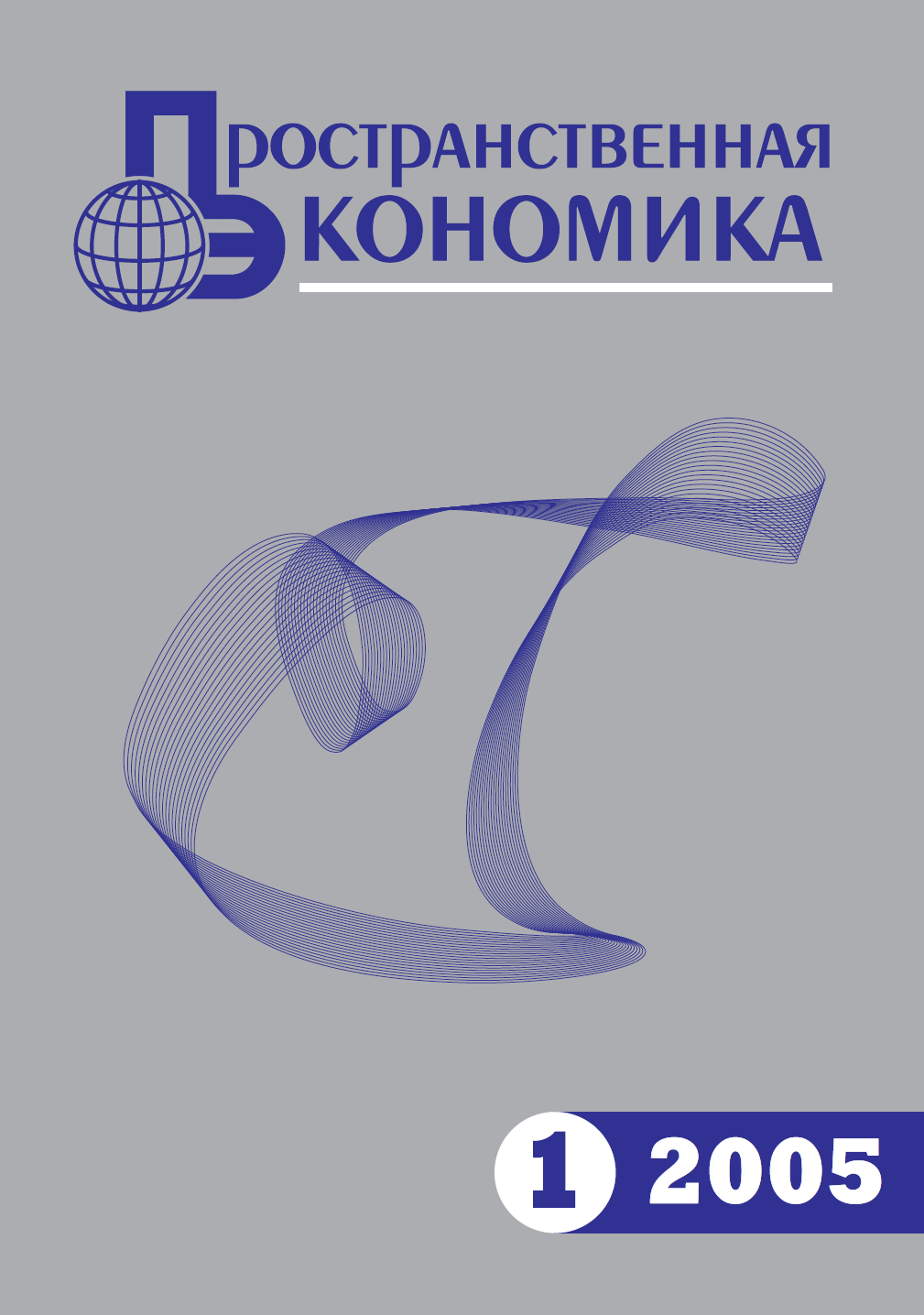| In the section | Articles |
| Title of the article | Post-Soviet Integration and Economic Growth of the New Borderland of Russia in 2005–2015 |
| Pages | 23—40 |
| Author | Leonid Borisovich Vardomskiy Doctor of Economics, Professor, Head of the Center FGBUN Institute of Economics, Russian Academy of Sciences Nakhimovsky Avenue, 32, Moscow, Russia, 117218 This email address is being protected from spambots. You need JavaScript enabled to view it. ORCID: 0000-0002-9508-5945 |
| Abstract | Features of the development of border areas are due, on the one hand, to their marginal position in the state, and on the other – proximity to neighboring countries. A lot of scientific works in Russia and abroad devoted to different purposes and based on different approaches and methods are devoted to the study of these territories. The purpose of this article is to assess the impact of the post-Soviet integration factor on the economic growth of the new border regions of Russia in 2005–2015. The study showed that this influence was not the same in different country areas of the belt of border regions. In general, the effect of the integration factor on their development by 2015 on the whole belt of border regions has weakened noticeably, which is explained by macroeconomic, geopolitical and structural problems. For the development of new border regions in this period, the situation concerning the Moscow region and the degree of their involvement in international trade were more significant. |
| Code | 332.13:339.54 |
| DOI | 10.14530/se.2017.4.023-040 |
| Keywords | border regions, economic growth, Russia, CIS, EAEU, neighborhood, integration, foreign trade quota |
| Download | |
| For citation | Vardomskiy L.B. Post-Soviet Integration and Economic Growth of the New Borderland of Russia in 2005–2015. Prostranstvennaya Ekonomika = Spatial Economics, 2017, no. 4, pp. 23–40. DOI: 10.14530/se.2017.4.023-040. (In Russian). |
| References | 1. Bezrukov L.A. Continental-Oceanic Dichotomy in International and Regional Development. V.B. Sochava Institute of Geography SB RAS. Novosibirsk, 2008, pp. 248–251. (In Russian). 2. Vardomskiy L.B. Russian Borderline in the Context of Globalization. Moscow, 2008, 212 p. (In Russian). 3. Vertinskaya T.S. Conceptual Bases of Development of Integration Ties on the Regional Level the Member Countries of the Eurasian Economic Union. The Institute of Economics of the National Academy of Sciences of Belarus. Minsk, 2016, 74 p. (In Russian). 4. Dmitriev M. New Formula of Wealth: How can Russia Escape from Middle Income Trap. RBK = RBC, 2015, 18 June. Available at: http://www.rbc.ru/opinions/economics/18/06/2015/5581596d9a794771284d8142 (accessed June 2017). (In Russian). 5. Zamyatina N.Yu., Pilyasov A.N. Concept of Proximity: Foreign Experience and Prospects of Application in Russia. Izvestiya RAN. Seriya Geografichechskaya = Regional Research of Russia, 2017, no. 3, pp. 8–21. (In Russian). 6. Kuznetsova O.V. Typology of Factors Governing the Social-Economic Development of Russian Regions Vestnik Moskovskogo Universiteta. Seriya 5. Geografia = Moscow State University Vestnik. Series 5. Geography, 2014, no. 2, pp. 3–8. (In Russian). 7. International Integration of the Russian Regions. Edited by I.I. Kurilla. Moscow, 2007, 304 p. (In Russian). 8. Cross-Border Cooperation of Regions of Russia, Belarus and Ukraine. Report No. 17. EDB Centre for Integration Studies. Saint Petersburg, 2013, 100 p. Available at: https://eabr.org/upload/iblock/ceb/doklad_17_ru_preview.pdf (accessed August 2017). (In Russian). (In Russian). 9. The Forecast of Socio-Economic Development of Russia until 2017 and Planning Period of 2018–2019. Ministry of Economic Development of the Russian Federation. Available at: http://economy.gov.ru/minec/activity/sections/macro/2016241101 (accessed January 2017). (In Russian). 10. Transparent Border. Security and Cross-Border Cooperation in the Area of the New Border Territories of Russia. Edited L.B. Vardomskiy, S.V. Golunov. Moscow – Volgograd: Center for Regional and Transboundary Studies of Volgograd State University, 2002, 573 p. (In Russian). 11. Russian Borderlands. Socio-Political and Infrastructural Problems. Edited by V.A. Kolosov, A.B. Volodina. Moscow, 2016, 188 p. (In Russian). 12. Russian-Ukrainian Borderland: Twenty Years of Separated Unity. Edited by V.A. Kolosov, О.I. Vendina. Moscow, 2011, 348 p. (In Russian). 13. Brakman St., Garretsen H., Van Marrewijk Ch., Oumer F. The Border Population Effects of EU Integration. Journal of Regional Science, 2012, vol. 52, issue 1, pp. 40–59. DOI: 10.1111/j.1467-9787.2011.00752.x 14. Kolosov V., Scott J. Selected Conceptual Issues in Border Studies. Belgeo, 2013, no. 4, pp. 9–21. DOI: 10.4000/belgeo.10532 15. Niebuhr А., Stiller S. Integration Effects in Border Regions – A Survey of Economic Theory and Empirical Studies. HWWA Discussion Paper 179. Hamburg, 2002, 30 р. Available at: https://www.econstor.eu/bitstream/10419/19341/1/179.pdf (accessed September 2017). |
| Financing | |
| Date |
